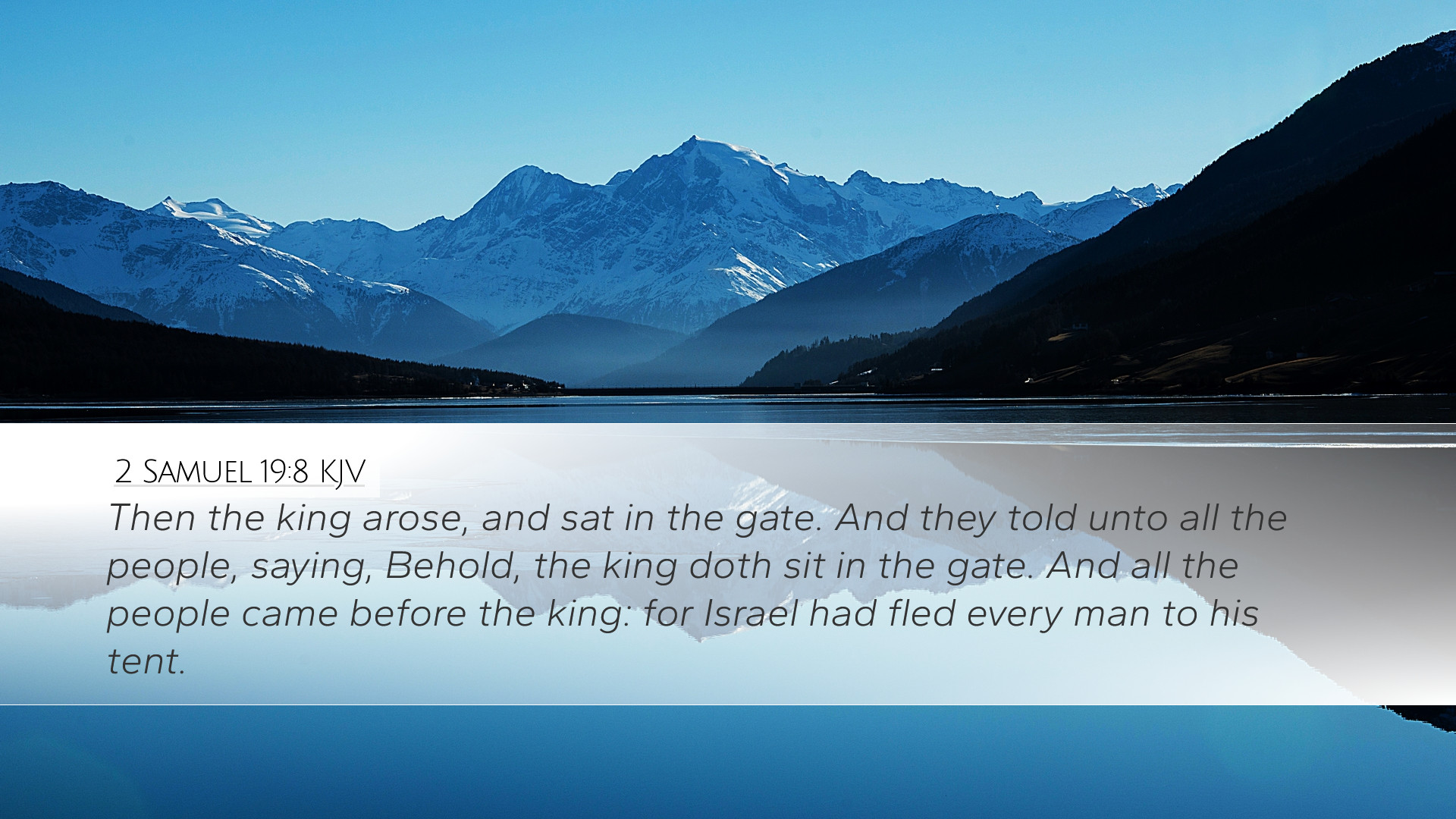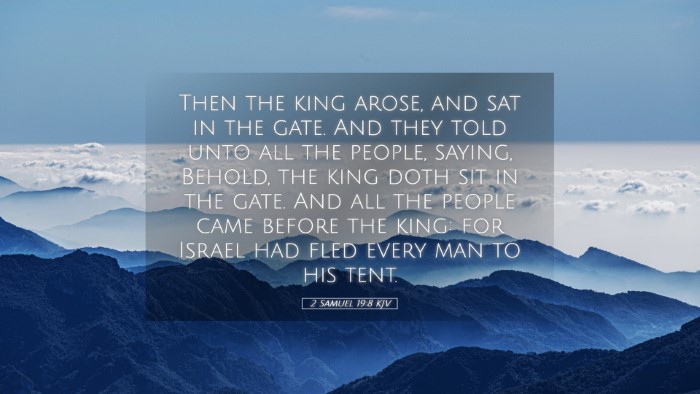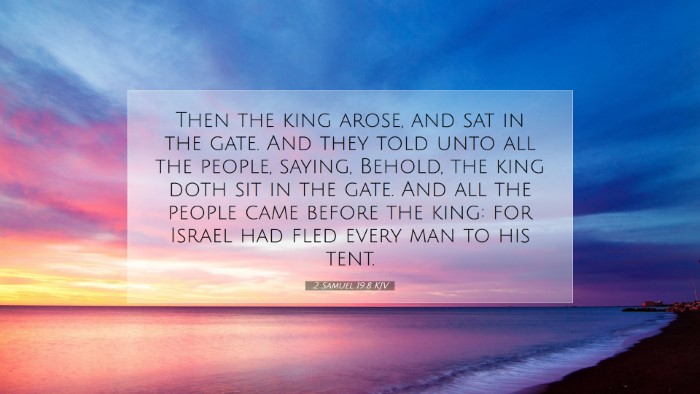Commentary on 2 Samuel 19:8
Verse: 2 Samuel 19:8 - "Then the king arose, and sat in the gate. And they told unto him, saying, Behold, the king doth sit in the gate. And all the people came before the king: for Israel had fled every man to his tent."
Introduction
This verse marks a significant moment in the narrative of 2 Samuel as King David returns to his throne after the insurrection led by his son Absalom. The act of sitting at the gate symbolizes authority, judgment, and accessibility. Through various commentaries, we gain deeper insights into the implications of this scene, the nature of leadership, and the dynamics between David and his subjects during a time of political turmoil.
David's Restoration
David's return to Jerusalem is pivotal. According to Matthew Henry, this event illustrates God's faithfulness in restoring the king after rebellion and chaos. Henry emphasizes that David's actions upon his return exhibit humility and a willingness to engage with his people, reflecting a leader who seeks reconciliation rather than revenge.
Albert Barnes highlights the significance of David sitting in the gate. The gate was not just a physical place; it was the center of political and judicial activity. By positioning himself here, David signifies his readiness to judge rightly and to re-establish order among his people. This act reverberates with themes of mercy, grace, and the responsibilities of leadership.
The Symbolism of the Gate
The gate symbolizes more than just a location; it represents a threshold between the kingdom's inner life and external affairs. Adam Clarke notes that it is at the gate that judgments are made and disputes settled. David's presence there conveys his commitment to governance and his desire to hear the concerns of his people who were dislocated by Absalom's rebellion.
- Accessibility: David sits where the people can come to him, suggesting that good leadership demands approachability.
- Authority: His position at the gate asserts his rightful claim to the throne, showcasing the authority restored to him while highlighting the downfall of Absalom.
- Judgment: The king's role in dispensing justice is underscored, showing the weight of responsibility that comes with leadership.
Political Dynamics
The fact that "all the people came before the king" indicates a moment of reunification. Matthew Henry mentions that people's recognition of David's authority was a turning point in the nation’s recovery. They abandoned their tents, which symbolize dislocation and division, in favor of the king, representing loyalty and a desire for stability.
Barnes elaborates on this sentiment, indicating that while many of David’s subjects had previously sided with Absalom out of confusion or fear, this gathering before the king signifies a collective shift back to their rightful ruler. This public acknowledgment of David’s kingship is significant for restoring both his royal dignity and national unity.
Lessons for Leadership
2 Samuel 19:8 serves as a profound teaching moment for leaders in any context. Clarke notes that the best leaders are those who, after adversity, remain accessible to their people. David does not retreat to the palace but rather comes to the place where he can meet his subjects directly.
- Humility: The king's decision to sit among his people embodies servant leadership. Pastors and leaders today are reminded that they must carry the burdens of their congregations alongside them.
- Reconciliation: In situations of division, effective leaders bring people together, healing wounds through dialogue and presence.
- Wisdom in Governance: David's judicial role at the gate encourages leaders to seek wisdom and justice rather than power for its own sake.
Applications for Today
For pastors, students, and theologians, the return of David as depicted in this verse offers rich applications. The church, likened to David’s kingdom, experiences seasons of conflict and resolution. Reflecting on this passage encourages leaders to rise up after challenges, embrace their roles with humility, and engage actively with their communities.
Moreover, this passage challenges believers to consider the nature of loyalty and the importance of steadfastness in the face of trials. Just as David had to restore relationships and trust, so too must modern leaders navigate the delicate process of rebuilding community ties. Understanding the political and spiritual dynamics at play in the story of David can provide valuable insights for church leadership today.
Conclusion
In summary, 2 Samuel 19:8 encapsulates key themes of restoration, leadership, and the dynamic nature of authority in a community. Through the lens of public domain commentaries, we discover that David's act of sitting at the gate was not merely a return to power but a commitment to his people and to the responsibilities of his kingship. For all who study this passage, it offers profound lessons on leading with integrity and grace.


